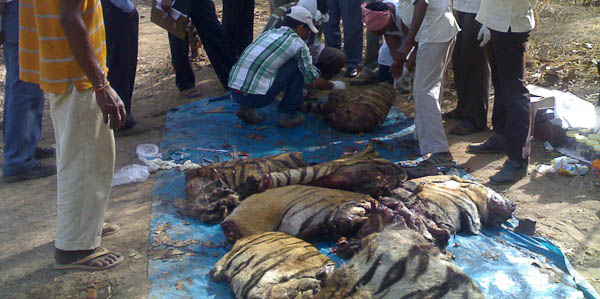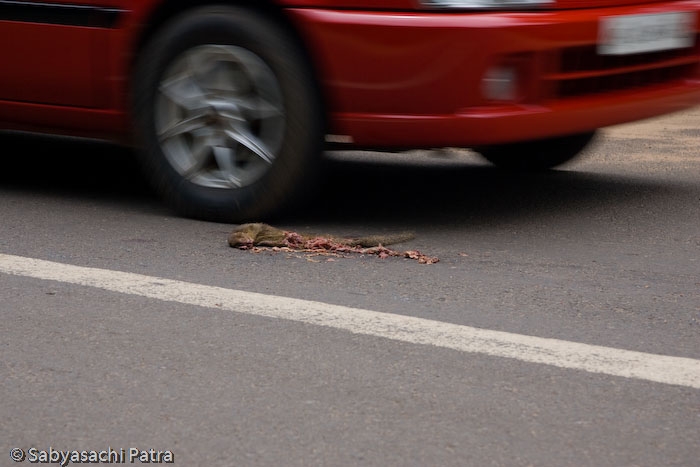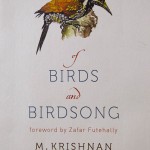5 ways you can contribute to save Wildlife in India
I was taking feedback about the IndiaWilds Newsletters and one person said “You write some lengthy articles, half of those I understand and the other half I assume as correct because you put a lot of data and quotations from great guys. I agree that I should be a part of the conservation efforts. However, I am not a photographer and the only writing I do is office emails. So I can’t write articles either. I also can’t go and protest infront of Government officies like Medha Patkar. I can’t also go to the field with you guys as I need to take leave from office. So how can I help in conservation?
This made me think and write this.
Many of you are underestimating yourself. The power lies when each of us come together and form a strong unit. Support from you, however minuscule it may be, can go a long way towards strengthening of our cause of saving wildlife and wilderness areas of India.
1- Awareness building to save wildlife in India:
First and foremost requirement is spreading awareness. A lot of damage is caused to wildlife in India because of the ignorance of our decision makers. You can read our Newsletters and other conservation articles and speak about these issues to your known people, forward those to people by email or give them printouts and urge them to read. When you visit your alma mater, speak about your new found passion.
Today most of us travel so much that we don’t have time to open our desktop computers or laptops at home. And there is a large group of people who don’t have access to computers but are accessing net through mobiles.In India most of the internet penetration is happening through mobile phones. So I think it is imperative to reach out to these busy executives as well as to people who don’t have access to computers. So we decided to create a mobile app to access IndiaWilds. You can now download this mobile app for android phones to access IndiaWilds and view videos and documentaries on wildlife, lovely images, read articles etc. please download the app from this link: https://play.google.com/store/apps/details?id=com.businesscompassllc.indiawilds.
You can ask your friends and acquaintances to download this app.
Be the voice of millions of wildlife who can’t speak (our language).

Tigress in Ranathambore hemmed by tourists
2- Raising your voice to save wildlife in India:
Wild India is under tremendous assault. Every day you can find a lot of issues while watching TV and reading newspapers. Also we keep posting the latest issues in the IndiaWilds Forums. You can pick up a cause and then write an email to influential people, concerned Government departments, ministers, letters to editors of newspapers, TV channels etc. After all, in a democracy it is the voice of people that often tilts the balance and makes the decision makers sit up, take notice and ultimately act. The names of a few senior Government officers are listed at the bottom of this page.

Tiger hacked into pieces by poachers
3- Films to raise awareness:
In a world which is fixated about saving the tiger, and ignoring the fact that other equally important and vulnerable species are vanishing, you can you can also forward this article to people in your office, among friends, in your society, school and college and speak on this issue. You can also share the link to IndiaWilds Youtube channel so that people can see documentaries, short videos etc to become aware of wildlife and conservation issues. Check the IndiaWilds youtube channel – http://www.youtube.com/user/IndiaWilds
Discovering Rann
Rann of Kutch in the state of Gujarat is often seen as a desert and a waste land waiting to be exploited. However, the Rann is an ecologically fragile desert ecosystem and various species are bound to each other by a complex web of inter-relationships. Discovering Rann highlights these interrelationships as well as the tough battle that many species need to do everyday to survive. The documentary contains a battle between an Eastern Imperial Eagle and a Desert Fox where each combatant uses its strengths to evade the other. Discovering Rann also shows the menace of the feral dogs and many other sub stories.
Jewels of Thane Creek:
My recent documentary film on Thane Creek explores the complex relationship between various species and aims to educate people about the rich natural heritage they have close to the metropolis of Mumbai. You can watch the film at the below link:
A Call in the Rainforest:
This film has been awarded by Maharashtra CM in 2012 and has been screened in various international film festivals. It was the official selection in Wildlife Conservation Film Festival, New York in Oct, 2014. This film documents the plight of one group of Lion-tailed macaques in Valparai, Tamil Nadu, India. It captures the impact of all our actions on the lion-tailed macaques and these issues are also found in other wilderness areas. You can check the film below.

A young Lion Tailed Macaque in Western Ghats, India
Bee-eaters of Naguvanahalli:
A short film on Bee-eaters titled
A God in Distress:
A short film on Elephants
This short film trailer showcases the plight of the elephants.
That will help in raising awareness to save other lesser known endangered species. You can check as well as ask others to check the IndiaWilds youtube channel – http://www.youtube.com/user/IndiaWilds
4- Financial Contribution:
You can contribute financially as well as help your network to raise resources to support conservation issues in India. There are many people tirelessly working in the field to help conserve India’s fast vanishing wilderness and wildlife. These people are the forgotten foot soldiers saving the biodiversity of India against tremendous odds. IndiaWilds is committed to helping them. We contribute amounts from our own pockets. If you want to contribute money, then do let us know and we can help you to reach out to the needy people directly.
5- Follow the rules when in a Jungle/Tiger Reserve
And last but not least, since you all visit jungles and other wilderness areas, please don’t forget that you are not in cities and hence should follow the rules mentioned by the forest department. Following are some minimum things which we all can follow when visiting a jungle or any nature spot
– Select a hotel/resort that is eco-friendly. Please don’t demand AC and other material comforts when you are in a jungle.
– No littering, carry back all the plastics we take and leave the place clean. Herbivores chew the polythene and other plastic wrappers due to the salt content and swallow it in the process and die a painful death.

Cheetal Axis axis deer munching a plastic packet of wafers in Bandipur Tiger Reserve, India. Deers often munch and swallow empty wafers packets carelessly thrown away by tourists and the deers are also known to be killed in the process.
– Our roads cut across our wilderness areas. Either choose a road that circumvents our forests or Drive cautiously as there can be wild animals crossing. Many wild animals fall prey to rash driving by people.
– No honking, that will help to enjoy the quiet and peacefulness of the jungle
– Don’t get down when passing through the jungle as that can be dangerous.
– Don’t feed any animals, like monkeys and deers or sambar. By feeding them we make them dependent on us and break their natural feeding instincts.
– Don’t buy memorabilia like t-shirts, caps etc from the vendors outside the national park gate, else you will encourage more and more people to set up shops there and increase the population of the village.
– Do carry your camera to document our fast vanishing wilderness areas and report it to us.
– If you find any illegal activities, then even click or record video with your smart phone and send it to us. We will take it up with the authorities.
If we follow these simple 5 steps we can in our own way contribute to save the wildlife in India.
You can write emails/letters to the following influential persons as applicable: (updated on 20/07/2015)
Shri.Narendra Modi
Hon’ble Prime Minister of India,
South Block, Raisina Hill,New Delhi – 110011
http://www.pmindia.nic.in/interact_with_pm.php#
Email: pmosb@pmo.nic.in
Tel: +91-11-23012312
Fax: +91-11-23016857
Shri Prakash Javadekar
Hon’ble Minister for MoEF&CC
Ministry of Environment and Forests
Indira Paryavaran Bhawan,
Jor bagh Road,
New Delhi – 110003
Email: mefcc@gov.in
prakash.j@sansad.nic.in
Tel: +91-11-24695136, 24695132
Fax: +91-11-24695329(Fax)
Shri C K Mishra, IAS
Secretary
Ministry of Environment and Forests
Room No. 1, Paryavaran Bhawaan,
CGO Complex,
Lodhi Road,
New Delhi – 110003
Tel: +91-11-24695262, 24695265
Fax: +91-11-243695270
Email: secy-moef@nic.in
Shri Siddhanta Das
Special Secretary & Director General of Forests (Wildlife)
Ministry of Environment and Forest & (Special Secretary)
Paryavaran Bhawaan,
CGO Complex,
Lodhi Road,
New Delhi – 110003
Email:dgfindia@nic.in
Tel: +91-11-24695282
Fax: +91-11-23380143
If you need any contact details of any Chief Minister, minister or Government official of any state to write your protest letter to Save Wildlife in India or for supporting us, please send your email to administrator@indiawilds.com.
- Endangered Wild Buffalo of Kaziranga - 4 July,2024
- Leopards: The Last Stand Trailer 2 - 1 July,2024
- GoPro Hero 12 Black - 6 September,2023













Yes we need to save and the ways to suggested should be implemented at once. I read somewhere few days back for Hunting, ‘Hunting is not a sport, for anything to be a sport, both should know they are participating.’ I can understand who do it for money but those who kill for adventure is beyond my understanding. What fun you derive by killing someone.
Saru,
Nice quote. I have no idea when life is at stake, how we can call it a sport. When I was charged at by Tiger or by elephant, self-preservation is the first thing that comes to mind. One will immediately run for the nearest cover. When we ourselves cannot take it as a sport and do the hide and seek play, how can we call it a sport. Fortunately, hunting as a sport has been banned. Unfortunately, hunting continues in the name of tradition by tribals and for meat and money by other poachers.
I have trekked in the forests and used to drink water directly from the streams. Today, we can’t do so because our water is polluted due to pesticide spraying, affluents from industries, domestic sewage and other garbage. We are like the proverbial Bhasmasura who is destroying itself. Unless the common man and woman understand, write, talk and urge the Government to change its ways, we will fail.
Sabyasachi
Problem we do not care for our neighbors. When we are so self-center how can we care for wildlife.
We care only about us and our family.
That second images hurts a lot to people who care for others.
Rajesh,
I agree with you. During our childhood days, we were taught the philosophy of “Vasudhaiva kutumbakam”. Vasudha means earth, eva or iva means is and kutumbakam means family ie. the world is your family. It is supposed to be one of our guiding principles in a country where hinduism is not only a religion but also a culture. Unfortunately, today our first reaction when we see any wild animal is to kill. I would urge all our saints and seers to help in saving our wildlife and wilderness areas.
Sabyasachi
Lovely post and informative. Appreciate the effort.
Wildlife and nature contributes equally to the process of environment and thus, human species to sustain in coming generations. Most of us do not understand the environment and it’s processes and even those who do, does not care about it much.
There are very few blogs or writers who highlight this important issue of wildlife.It’s good you are highlighting this issue, it will make at least a few aware.
Thanks Anjali!
The impact of our actions, gets multiplied as we are 7 billion in this planet. It becomes very difficult for mother earth to withstand our torture. We need to wake up and realise that we can’t just which species or wilderness area to save and which one to sacrifice. Awareness is the first step in fighting the battle. I hope we can spread sufficient awareness.
Hi
Thanks for the share. Very useful tips for people with interest but no direction. To begin, I shall post this link on my FB page.
Thanks Jaishree!
I am happy that you are posting it in the facebook page, so that the message can be spread.
A great post. Although I love the tiger, I agree about the fact that tiger hogs all the limelight. There are several hundred species whose situation is dire. Thank you for sharing this informative post.
A set of practical guidelines.Thanks.
I am always impressed by all the blogs you write on wild life and how much you care.
If we all did our parts, life would be easy!
Thanks Ghazala!
It is very true that if all of us do our part, then we can easily save our environment and in turn save ourselves.
you know ,this care for the wild life is somewhat inborn–some feel it,some don’t–i personally think that God has made the animals self-sufficient-they can take care of themselves;but of course plundering of forests is very wrong.
Indu,
You have made the right point that plundering our forests is wrong. Just imagine the amount of amla that we extract from our forests everyday for our needs. From where else all the amla comes that we eat in form of pickles or juice. We all try to keep our parks “green” by planting exotic grass which needs more water. If we can just plant these native plants, then a lot of our requirements can be met. Instead of conretising every square feet of the land, we can keep space in the apartment blocks and plant the trees.
Sabyasachi, It’s amazing that there are a bunch of people like you are taking strict efforts to protect our wildlife. And as you said, each one of us can do our bit…thanks for the info. Am going to note down the particulars for future references. Thanks…
Panchali,
We are not God. So only a few people wanting to save the earth is not enough. Every body has to pitch in and pickup an area to make a difference. People like you who write well can really help in raising awareness.
Cheers,
Sabyasachi
hello sir,
please save animals from farmers . i have searched for forest officers numbers but i didn’t get proper information in internet. actually fields near to forest area so night time bears , deers, rabits and pigs.usually this place near villages killing forest animals using current wires https://www.google.com/maps/search/Muttukur,atlur+mandal,+Andhra+Pradesh+524344/@14.5544376,79.0959361,14.54z
My heart goes out to see the picture of the majestic tiger lying in parts killed by bad omens. Will surely do my bit. Thanks for all the info you have given.
You should also write about reducing consumption. Demand for energy, paper, water, food etc is one of the major causes behind reducing forest cover
Thanks Jaidev! I agree with you that I need to write more about demand for energy, paper, water, food etc. The rate at which we are gobbling resources, this world is not enough. Our focus is on producing more energy, but not on reducing wastage and consumption. For some more details please check this article: http://www.indiawilds.com/diary/energy-efficiency-green-power/
I will write more on our increasingly consumerist lifestyles and their impact on reducing forest cover.
Cheers,
Sabyasachi
Thanks. We did visit Ranthambore but at that time, didn’t know about the things we could do to help. I do believe we failed on two counts – we bought peak caps and we opted for A/c-ed rooms. I can now see the sense in what you say. With the village expanding, in no time it would encroach on the forest. Keep educating us.
Very informative yet practical post. I will definitely do my best to save wildlife !
Great to hear that. All of us need to work towards saving our wildlife and wilderness areas.
If we are Human then it is our first duty to save & protect our Wild life to save our next generation……………..!
Bhaskar,
I completely agree with you. We have appropriated everything as if there is no tomorrow. I am not sure if we care for the next generation.
Sabyasachi
Sir u r doing good job … l will definitely save my wildlife. I suggest the people to watch some movies like two brother, eight below, black beauty etc… I promise it will change the mindset of atleast some people
It’s very important to give our contribution in conservation . I hope that there should be spreading awareness of helping wildlife financially on t.v because most of us don’t know.
Sir you are doing valuable work for wildlife. Life of human has became so big that people don’t have time to look outside. They just want nature for their relaxation.
I love wildlife the real problem is population of india which is degrading life of forest. People are not at all interested in any wildlife conservation they just say it but not act. I always post information on my facebook account for little awareness. People are busy in their work. Another thing I want to mention is there is glamour of tiger project as each and every species is important. If we come in glamour we will lose all species. There are no strict law there is importants to human life only. I want to help when I will became forest officer. There are lot many things to tell. Conclusion is there is need of collective work
I agree that the human population explosion has led to decimation of the habitat of other species and pushing them towards extinction. There is also a huge illegal demand for wildlife body parts for use in medicine, decorative items etc which is decimating some of our iconic species like elephants, tigers and rhinos. People have a limited view about the importance of preserving other species and their habitat. This is because there is no awareness. These things are not taught in text books. Nor do they hear about it anywhere. So we need to send articles, films etc to everybody to raise awareness.
Good to hear that you are interested in becoming a forest officer. All the best!
Describe how can u contribute to protect flora and fauna of our country?
Please tell the answer
Please tell me what is flora and fauna
Nice written
It helped me in my school project
Write more
I even need help in history
If you can do it
Thanks
Great points Sabyasachi! The greatest contribution that I think one can make is by voting a politician who really values and understands biodiversity and wildlife. An effective wildlife policy can cause a greater change than individual contributions.
Thanks.
I agree about voting politicians on issues. However, people are easily manipulated by the enormous amounts of money being pumped in and lots of fake propaganda. Nevertheless we should make efforts to create a better tomorrow. And yes we should vote based on the candidates views on environment issues.